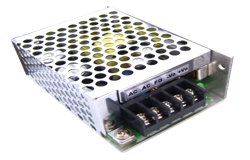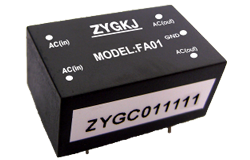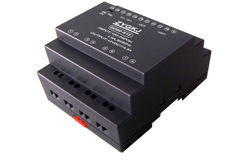خبریں
Exploring the Electric Power Series: Uncovering the Wonders of Electricity
مصنف: زیڈ وائی جی پاور ماڈیول Time: 2023-8-26
Electricity is an integral part of our daily lives, powering our homes, devices, and industries. It has become such a fundamental necessity that we often take it for granted. However, behind the flick of a switch lies a fascinating world of science and innovation. In this article, we will delve into the wonders of electricity and explore the electric power series that drives our modern society.
At its most basic level, electricity is the flow of electric charge. This charge is carried by tiny particles called electrons, which exist in all matter. The movement of these electrons creates an electric current, and it is this flow of charges that powers our lives. But how exactly does electricity work?
The fundamental concept behind electricity is based on the behavior of atoms. Every atom consists of a nucleus, containing positively charged protons and neutral neutrons, surrounded by negatively charged electrons. Normally, atoms have an equal number of protons and electrons, making them electrically neutral. However, when electrons are stripped away or added to an atom, it becomes positively or negatively charged, respectively.
Electricity is generated when a potential difference, or voltage, is created between two points. This voltage can be produced by various means, such as chemical reactions, magnetism, or mechanical motion. Once the voltage is established, it pushes the electrons from a region of negative charge (the source) towards a region of positive charge (the load). This flow of electrons is what we commonly refer to as an electric current.
The electric power series is a term used to describe the different sources and forms of electricity. The series begins with the primary sources of electricity generation, such as fossil fuels, nuclear energy, and renewable sources like solar and wind. These sources are used to produce electricity on a larger scale through power plants.
Power plants generate electricity by converting a primary energy source into mechanical energy. For example, in a coal-fired power plant, coal is burned to heat water and produce steam. The steam then drives a turbine, which spins a generator to produce electricity. Similarly, in a nuclear power plant, the heat generated by nuclear reactions is used to produce steam and generate electricity.
Once electricity is generated, it is transmitted through an extensive network of power lines, transformers, and substations. This transmission system ensures that electricity reaches homes, businesses, and industries. However, before it can be used by consumers, the electricity goes through a process called distribution. Distribution involves stepping down the voltage through distribution transformers, making it safe for consumption.
At the consumer level, electricity powers a wide range of devices and appliances. From lighting up our homes to charging our smartphones, electricity is a vital part of our everyday lives. It also plays a critical role in industries, powering machinery, production lines, and facilitating technological advancements.
Electricity has paved the way for countless innovations and advancements. It has revolutionized transportation with electric vehicles, making them a sustainable alternative to fossil fuel-powered cars. Additionally, the development of renewable energy sources has led to a greener and more environmentally friendly approach to electricity generation.

As we rely more on electricity, it becomes crucial to use it efficiently and responsibly. Energy conservation and sustainability are essential to ensure a reliable and environmentally friendly power supply. This can be achieved through practices such as using energy-efficient appliances, adopting renewable energy sources, and promoting awareness about responsible energy consumption.
The electric power series is a fascinating exploration of the wonders of electricity. From its basic principles to its generation, transmission, and utilization, electricity plays a significant role in powering our daily lives and driving our modern society. Understanding the science behind electricity and adopting sustainable practices will pave the way for a brighter and more sustainable future.
پچھلا: DM Series DC DC Power Supply manufacture
اگلے: China ZP Series: A Powerful AC DC Converter for All Your Energy Conversion Needs
متعلقہ معلومات
-
2023-4-18
AC-DC کنورٹر: الٹرنیٹنگ کرنٹ کو ڈائریکٹ کرنٹ میں تبدیل کرنا
An AC-DC converter, also known as a rectifier, is a device that converts alternating current (AC) to direct current (DC). This is necessary because many electronic devices, such as computers and televisions, require DC to function properly. AC-DC converters are used in a variety of applications, from household appliances to industrial machinery. The process of converting AC to DC involves several steps. First, the AC voltage is rectified, or converted to a pulsating DC voltage. This pulsating DC voltage is then filtered to remove any remaining AC components, resulting in a pure DC voltage. The resulting DC voltage can be used to power a wide range of electronic devices. There are several different types of AC-DC converters, each with its...
تفصیلات دیکھیں -
2023-4-15
An AC-DC converter is an electronic device that converts alternating current (AC) to direct current (DC). This is a common requirement in electronic circuits as most electronic components require DC for proper operation. In this article, we will discuss how to build an AC-DC converter. Step 1: Determine the Voltage and Current Requirements The first step in building an AC-DC converter is to determine the voltage and current requirements for your application. This will depend on the specific electronic components you are using. For example, if you are powering an LED, you may require a low voltage (e.g. 5V) and a low current (e.g. 20mA). On the other hand, if you are powering a motor, you may require a higher...
تفصیلات دیکھیں -
2023-5-15
12V 15A AC to DC Converter: Efficient Power Conversion for Your Electronic Devices
The 12V 15A AC to DC Converter is a device that efficiently converts alternating current (AC) to direct current (DC) for use in electronic devices. It is an essential component for many electronics, as most devices require DC power to function properly. The converter can be used for a variety of electronic devices, including audio and video equipment, LED lighting, computers, and more. Its compact size makes it easy to install and use, and it is designed to be very efficient, providing reliable power for your electronic devices. One of the key benefits of the 12V 15A AC to DC Converter is its ability to convert AC power to DC power with minimal loss. This means that the device is...
تفصیلات دیکھیں -
2023-8-13
12V AC to DC Converter for LED: Efficiently Powering Your LED Lighting Systems
Introduction In recent years, LED lighting systems have gained immense popularity due to their energy efficiency and longer lifespan compared to traditional lighting options. However, powering these systems can be a challenge, as they require direct current (DC) while most power sources provide alternating current (AC). To bridge this gap, a 12V AC to DC converter comes into play. This article aims to explore the significance of this converter in efficiently powering LED lighting systems, shedding light on its functionality, benefits, and applications. Functionality and Working Principle At its core, a 12V AC to DC converter is an electrical device that converts alternating current (AC) into direct current (DC). This process involves several key components, including a transformer, rectifier, and...
تفصیلات دیکھیں -
2023-4-27
Title: Industrial AC-DC Converter for Efficient Power Conversion
Industrial AC-DC converters play an essential role in power electronics as they convert alternating current (AC) to direct current (DC). These converters are widely used in various applications such as power supplies for computers, telecommunication equipment, and other electronic devices. The development of industrial AC-DC converters aims to ensure efficient power conversion, reliability, and safety.One of the primary challenges in designing industrial AC-DC converters is to ensure high efficiency. Efficiency refers to the ratio between the output power and the input power. The efficiency of AC-DC converters is critical as it affects the power loss and heat generation within the system. High-efficiency converters can reduce energy consumption and operating costs.To improve efficiency, designers use advanced techniques such as soft switching,...
تفصیلات دیکھیں -
2023-5-26
DC Power Conversion: Understanding the Basics and Applications
Direct current (DC) power conversion is an essential process in our modern world. It involves the transformation of electrical energy from one form to another. DC power conversion is widely used in various areas, from household appliances to industrial automation, and from renewable energy generation to electric vehicles. In this article, we will discuss the basics of DC power conversion and its applications. DC Power Conversion Basics DC power conversion involves three main components: input source, conversion circuit, and output load. The input source can be an AC power source, a battery, or a renewable energy source like solar or wind. The conversion circuit is responsible for converting the input power to the desired output power. It consists of voltage...
تفصیلات دیکھیں


















